‘Moonlighting’ Cast: On-Set Memories and Fun Facts from the Screwball Detective Series
- Oops!Something went wrong.Please try again later.
With its blend of sex appeal and dramedy, Moonlighting was irresistible from the start — and now it’s back, streaming all five seasons on Hulu! The series, which originally aired on ABC, stared the already-famous Cybill Shepherd and newcomer-at-the-time Bruce Willis, and its creative plotlines and the will-they-or-won’t-they chemistry of its two stars captured viewers’ imaginations. Premiering on March 3, 1985, it had us tuning in to hear the snappy banter and see the drama, until the behind-the-scenes Moonlighting cast discord, and Willis’ growing career after he starred in 1988’s Die Hard, put an end to it in May 1989.
The show was created by Glenn Gordon Caron, who had been a producer on NBC’s Remington Steele, another glamorous, serio-comic detective series with a pair of flirty-combative sleuths. With the success of that and other crime-solvers in the ’80s, ABC wanted “one of those boy-girl detective shows,” Caron told the Television Academy in an interview. He wasn’t interested, however, until they told him he would have free rein. “So, I thought, all right, if I’m going to do this, I’m going to lampoon it,” Caron recalled.
With dream sequences, musical numbers, and one episode that riffed on Shakespeare — in which all the dialog was delivered in iambic pentameter! — Caron had a ball, despite his initial plan to “do a show that’ll just kill the genre.”
Related: Cast of ‘L.A. Law’ Then and Now: Catch Up with the Stars of the Hit Legal Drama
In the series, Shepherd joined the Moonlighting cast as Maddie Hayes, a former fashion model who wakes up in the pilot episode to discover all her money has been stolen by her accountant. One of the lone assets she has left is a detective agency she’d used as a tax write-off. Willis plays David Addison, the wisecracking private eye running the agency. When he ultimately convinces Maddie to partner with him to keep the business going, the series was off and running.
Other series regulars included Allyce Beasley as quirky receptionist Agnes DiPesto and Curtis Armstrong as Herbert Viola, a temp brought into the agency in Season 3, who eventually becomes a junior detective and love interest for Agnes.
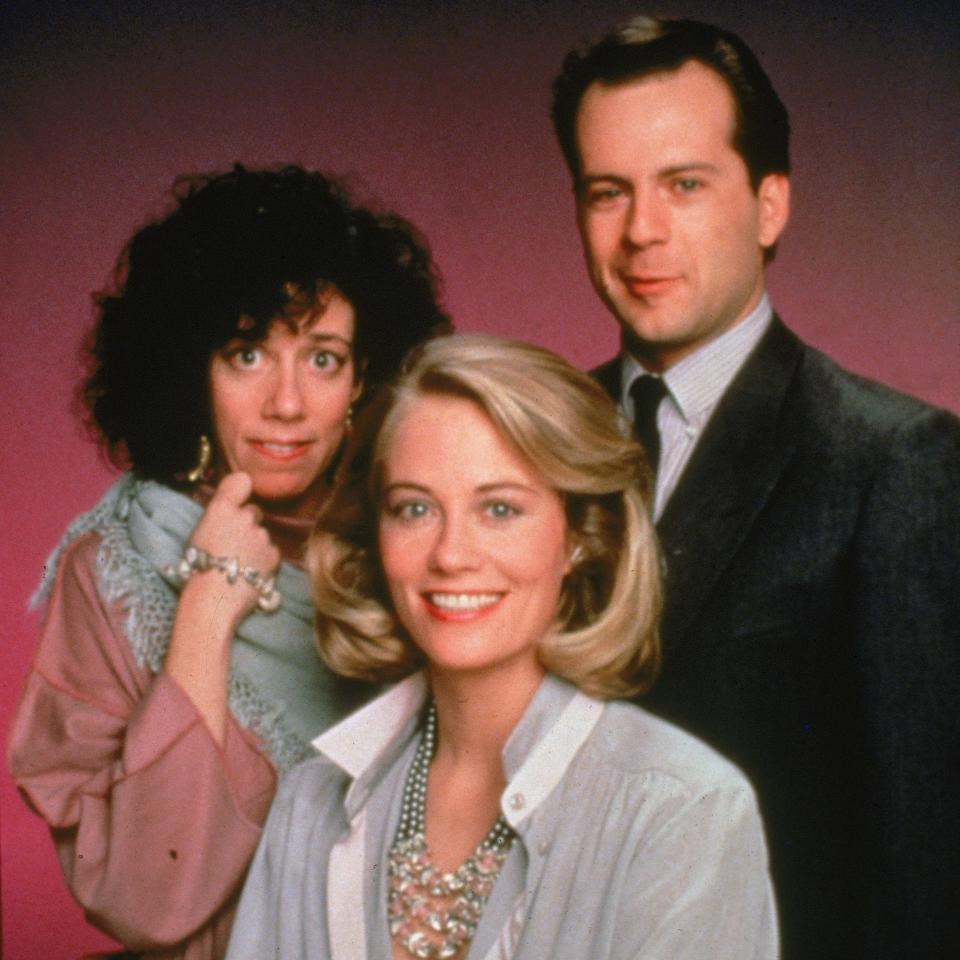
Related: 80s TV Show Stars: 30 of Our Favorite Actors and Actresses Then and Now
The show was a critical hit, with The New York Times calling it “the most significant television phenomenon of 1985,” and touting the two leads’ “irresistible chemistry.” Praised for its inventiveness, the series let viewers feel a part of the joke as it frequently broke the fourth wall, talking directly to the audience, and in the final episode, the set was literally dismantled around the actors.
“It was fantastic,” Cybill Shepherd told the Television Academy. “It’s like a real finality and reality about it.”
In celebration of the show’s streaming run on Hulu, here’s a look back at the Moonlighting cast, and some of the behind-the-scenes secrets of this quirky, beloved classic series.
Bruce Willis was a nobody
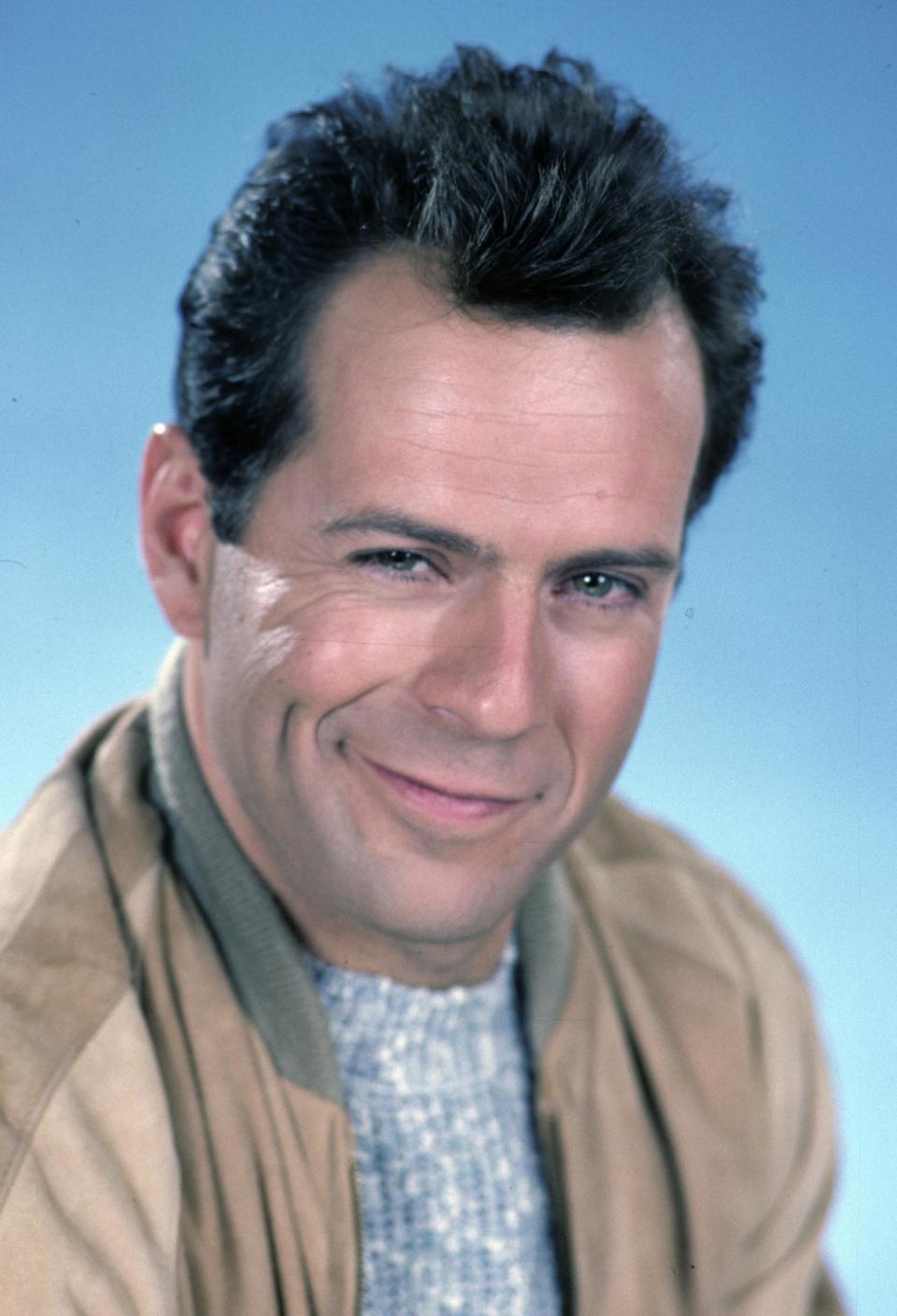
Caron and ABC had trouble casting David Addison. Caron told the TV Academy they’d thought about hiring L.A. DJ Rick Dees, and unfortunately for them, Bill Murray already had a movie career. They’d looked at around 1,100 actors, but then in came Willis. “His head was shaved, he had all these earrings, he was wearing combat fatigues, and when he was done… I said, ‘That’s him,’” Caron recalled.
Willis, who went on to big screen megastardom, had only done work as an extra and an off-Broadway role, and the network said no 11 times before they finally agreed to the casting.
That chemistry between the Moonlighting cast was real
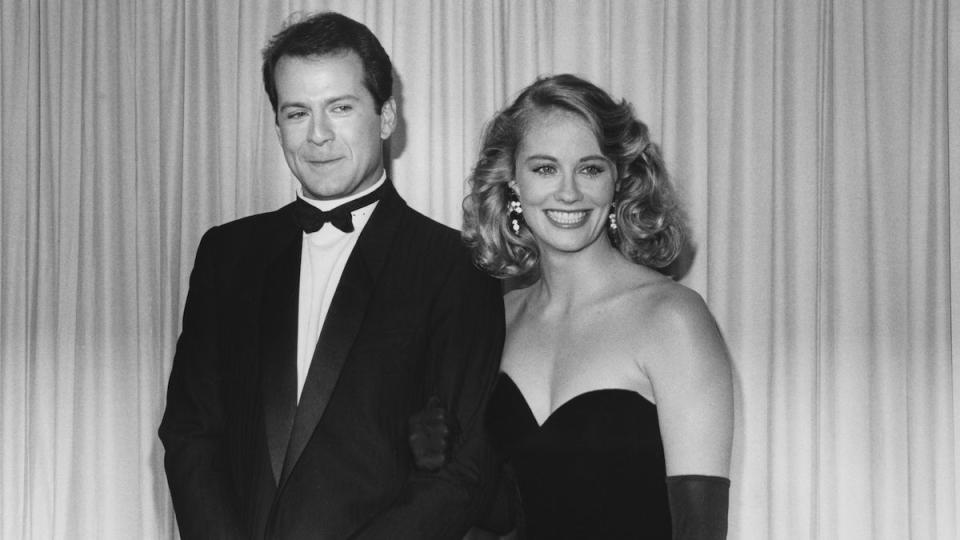
The electric banter and sexual tension between Maddie and David wasn’t only written into the script. Shepherd, a model who’d risen to stardom after appearing in Peter Bogdanaovich’s 1971 film, The Last Picture Show, revealed that she and Willis did spark in real life. “We had fights all the time,” she told the Television Academy. “That was part of the preparation [for scenes], that working up to it. So it was real.”
The fighting wasn’t the only thing that was true, however. From their very first meeting, Shepherd also told the Academy, “When he walked in the room, my temperature went up 10 degrees.” In her 2000 memoir, Cybill Disobedience, she wrote that she once asked him, “Are we going to do something about this or what?” And they did passionately kiss. But they both decided to cool it while they were still working together. And then, of course, Willis met and married Demi Moore in 1987.
Moonlighting cast loved to break the fourth wall — with Orson Welles
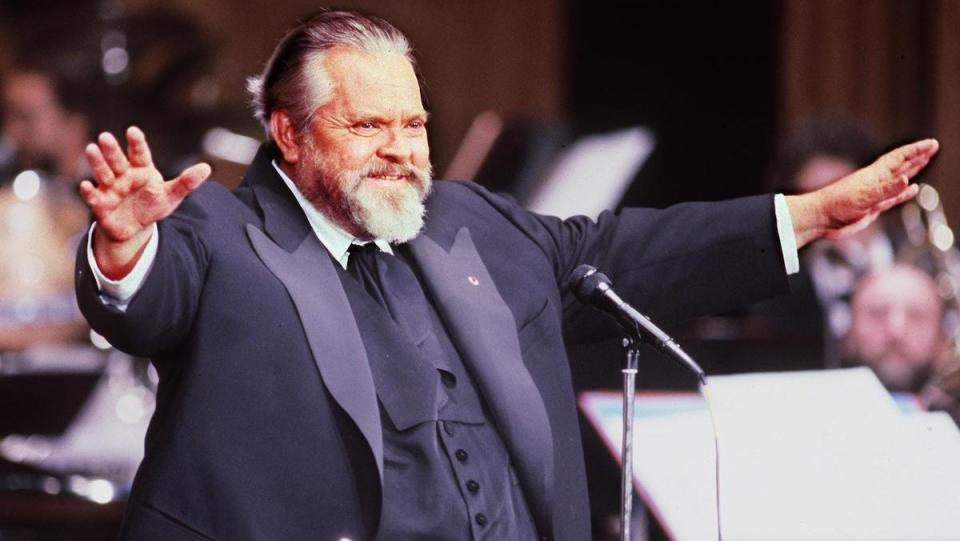
In one 1986 episode, the show opened with Shepherd and Willis addressing the camera and reading fan mail that asked when their characters were going to kiss. To that Addison says, “I’m just a television character… We don’t kiss tonight.” The show also had fun with the fact that they got nominated for 16 Emmy Awards, and then didn’t win, writing jokes about it into the show.
But perhaps most famous fourth-wall moment is in the iconic second season episode “The Dream Sequence Always Rings Twice,” when the show landed a cameo from none other than Citizen Cane auteur Orson Welles. He introduced the film noir episode, filmed in black and white, to the audience. “Tonight, broadcasting takes a giant leap backward…. Nothing is wrong with your television set.… Tonight’s episode is an experiment,” he dryly intoned, in what turned out to be his last performance. As Caron told the TV Academy, he was “the nicest man. He was so thrilled to be there.” Sadly, Welles died a week later.
Moonlighting inspired Billy Joel to write a song
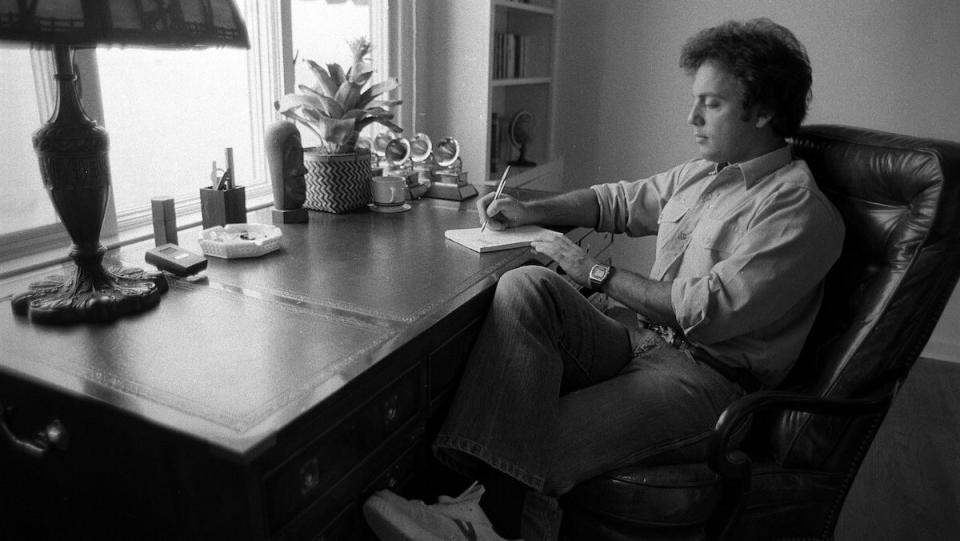
Caron recalled in the special Memories of Moonlighting that the series’ music producer Phil Ramone once called him and reported “Billy Joel wrote this song and he was thinking about your show when he wrote it, do you want to hear it?” Joel was a megastar in the ’80s, so when he delivered a nine-minute version of “Big Man on Mulberry Street,” Caron said he decided to turn it into a musical number. “I’d always wanted to do storytelling through dance,” Caron said.
And in the Season 3 episode — in which Maddie has a dream about a nightclub romance gone wrong after learning that David had been married before — he got his wish. What’s more, Singin’ in the Rain co-director Stanley Donen directed and choreographed the Moonlighting scene! “I was the lamest one in there, because I had to learn how to dance,” Willis recalled in the Memories of Moonlighting special. “I didn’t move well at all.”
The series was chaotic behind the scenes
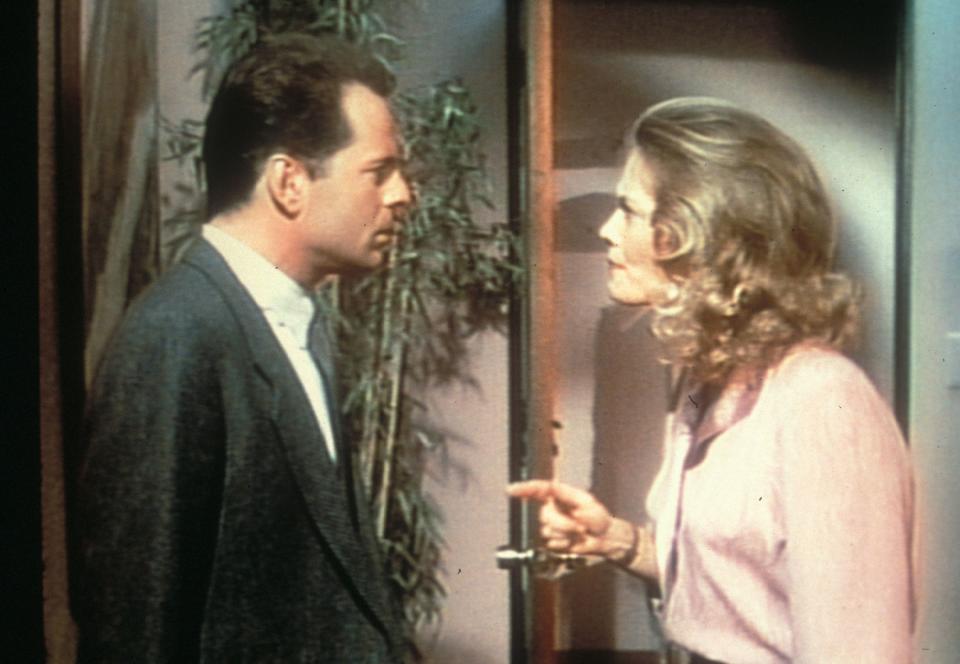
Moonlighting, like most shows at that time, received a 22-episode order for a season, but the most they ever put together was 18 for Season 2. That happened in part because Caron viewed each episode as a “little movie,” he told The New York Times.
Hour-long shows at the time had scripts that ran to 60 pages, but Moonlighting’s could be twice as long “because the characters talk so fast,” reported The New York Times. (The scripts took their cue from the fast-talking screwball comedies from the 1930s and ’40s, like Bringing Up Baby and His Girl Friday.)
The cast and crew worked around the clock. “I left home at 5 a.m. each day…almost from the moment the camera started rolling we were behind schedule,” Shepherd wrote in her memoir. And toward the end of the series, the actors were exhausted and not getting along. “There was discord on the set,”
Caron admitted in commentary from the 2005 DVD release. And when Shepherd became pregnant in 1987, “it made it even harder,” he said. “I think Cybill was hoping for an easier gig.”
Caron left the series before the last season in the midst of the off-camera chaos, a departure that he called “very, very painful,” and the show continued to collapse, ultimately being canceled at the end of its fifth season.
Still, there’s no denying that Moonlighting broke new ground for television and remains a beloved fan favorite. “It’s an extension of a great tradition of comedy,” Shepherd said of the show’s legacy, while Caron says he hopes people watch it and realize “television isn’t always about doing the same thing, it can perhaps be about doing a different thing.”
Click through for more classic 80s TV facts!
Must-Read Secrets About the Cast of ‘Night Court’ — And What They’re Doing Today
The ‘MacGyver’ Cast Then and Now: Catch Up With the Stars of This Beloved Action Series
‘Joanie Loves Chachi’: Fun Facts About the Short-Lived ‘Happy Days’ Spinoff

